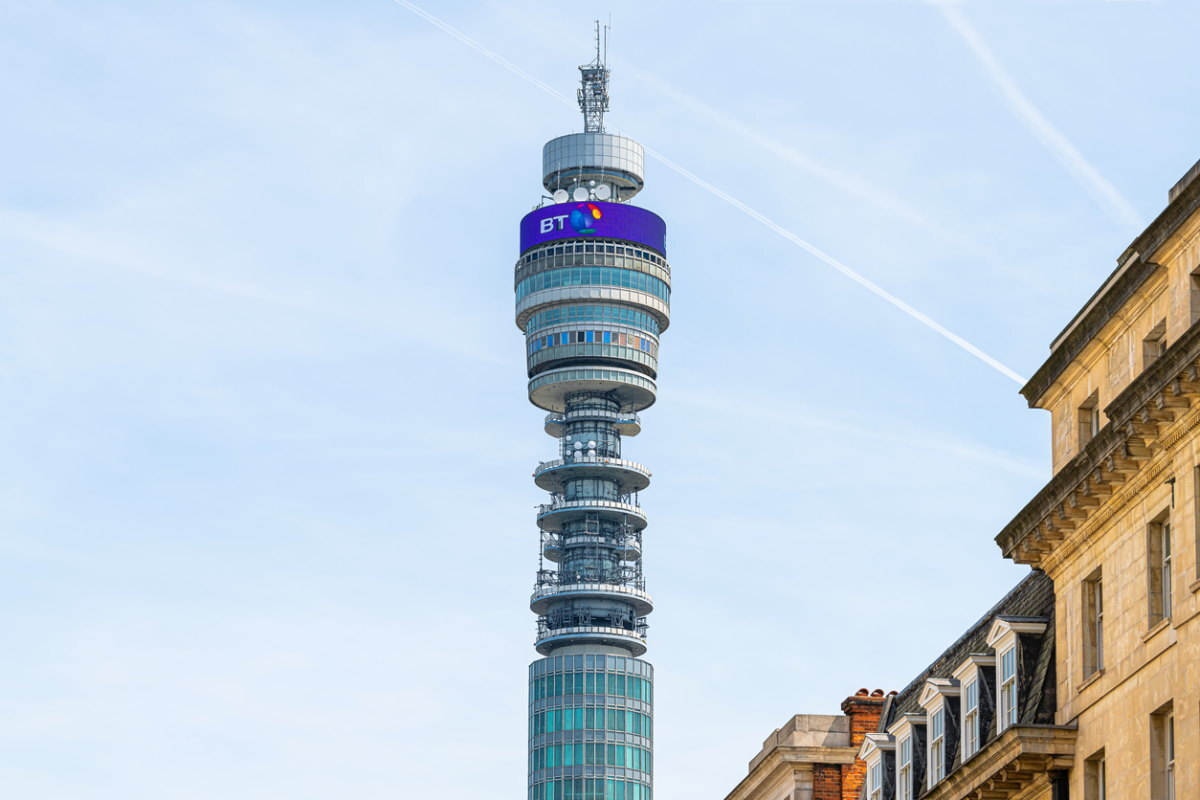BT taking a backseat is a mammoth branding challenge

Jesper Theill Eriksen at Templafy explains the challenges that BT will face in making EE its consumer facing brand
BT’s plan to make EE its consumer-facing brand is a clear attempt at strategic repositioning. With BT taking the backseat for only B2B offerings, the company will aim to use EE to compete with fresher brands such as Vodafone, Virgin and Three, and shed some of its dated reputation that is evidently failing to resonate with today’s tech savvy consumers.
In addition, by the end of the year BT is planning to combine its sports broadcasting business with Warner Bros Discovery - should the UK’s Competition and Markets Authority (CMA) allow it. This potential second new brand adds another layer of complexity to an already major brand repositioning that is underway.
BT needs to ensure that they have tech tools in place to make sure the right branded content is served to the employees working within the right product lines. Now and for the potential second repositioning at the end of the year.
This is essential, as any uncoordinated use of off-brand, non-compliant content will hurt BT’s brand repositioning. BT and EE therefore need to ensure their tech stacks are as integrated as possible in order to manage this transition quickly and seamlessly.
The challenge - internal adoption
For a company as big as BT, a change in brand strategy is a mammoth task for marketing, communication and brand teams especially. But after all the external pieces are rolled out, like ads or changes to the company website, another massive hurdle comes into view - internal adoption.
This phase is where many companies fail largely due to the fact that they often neglect one key component of a strong brand: business documents.
Employees create business documents at a rapid pace, from emails to pitch decks to contracts and more. These documents include branding and are key pillars of building a strong brand. If employees are using outdated branding in these documents, it can cause major problems, especially in the beginning phases of establishing a new brand identity.
Every piece of metadata, every email signature, every business document, every creative asset has a digital footprint and therefore is content. However, businesses haven’t prioritized building a tech infrastructure to support this kind of content in today’s modern enterprise – presenting a complex hurdle especially when repositioning an established brand.
Bad content hurts brands
When outdated content is used by employees in business documents, organizations can face a reputation and revenue-damaging nightmare. For example, forgetting to update a new contract with EE specific legal language and then failing to deliver on a key promise within that contract - imagine the lawsuit to follow.
Since rolling out content pieces like logos, fonts or disclaimers to an organization is complex, marketing teams need to consider how they can ensure new content finds the right document workflows.
Without the right tech in place, you can’t be sure that you’ll have a suitable content infrastructure to ensure that on-brand content will get used by every employee in every business document created.
A lack of content infrastructure across global enterprises has been proven true in a recent global survey of over 2,000 professionals that showed 60% of workers admit they lose time creating content that already exists somewhere in their organization.
And when they’re recreating that content on their own it often doesn’t include the correct branding. Instead of painstakingly searching for the latest logo or disclaimer that lives somewhere in their tech stack, employees often take the path of least resistance pulling from whatever is most accessible.
In fact, 73% of respondents don’t use the latest company-approved version of relevant content when creating new pieces - which could be disastrous in a rebrand on the scale of BT’s.
In a business as wide-ranging as BT, with legions of customers, the knock-on effects of weak content infrastructure can hurt a rebrand’s chances of success from the off, alienating both customers and employees.
Smart document solutions
There are several options available to businesses like BT, looking to coordinate large scale rebrands or strategic repositioning. The first is ensuring they have tech solutions in place to intelligently connect content to employees where they already work, when it matters most. This is the concept of content enablement, and businesses all should prioritize incorporating that kind of technology into their tech stack.
For instance, document generation solutions that are driven by content enablement, automate the document creation process instead of forcing employees to waste time digging in company repositories. This ensures that all legal guidelines are met, and mitigates the risk of non-compliant, off-brand content being used in external customer-facing documents.
The importance of the tech stack
Organizations considering major changes to their brand strategy like BT must take into consideration their tech stack to optimize the flow of company-wide content.
Sadly, many organizations today suffer from fragmented tech stacks that arise from piecing together different technologies without proper integration. This makes it nigh on impossible to launch a rebrand where masses of content need to be strictly separated out between two organizations.
In BTs case, smart automation tools can guarantee that all templates and documents are updated with EE branding and employees are directly served this content within the applications they’re already using.
Most importantly, it would provide the necessary infrastructure to take the guesswork out of BT’s brand repositioning, and ensure BT can successfully pass on the torch for its consumer operations.
Doing so effectively puts it in good stead to meet the much bigger rebrand challenge should its £633 joint venture with Warner Bros Discovery go through.
Jesper Theill Eriksen is CEO of Templafy
Main image courtesy of iStockPhoto.com

Business Reporter Team
Most Viewed
Winston House, 3rd Floor, Units 306-309, 2-4 Dollis Park, London, N3 1HF
23-29 Hendon Lane, London, N3 1RT
020 8349 4363
© 2025, Lyonsdown Limited. Business Reporter® is a registered trademark of Lyonsdown Ltd. VAT registration number: 830519543





